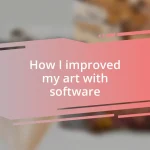Key takeaways:
- Understanding the importance of choosing the right software and tools can significantly enhance the sculpting experience and results.
- Adopting foundational techniques like blockout shapes and using reference images helps in developing solid proportions and enhances overall sculpting skills.
- Engaging with a supportive artistic community and seeking constructive feedback can lead to personal growth and improved techniques in 3D sculpting.
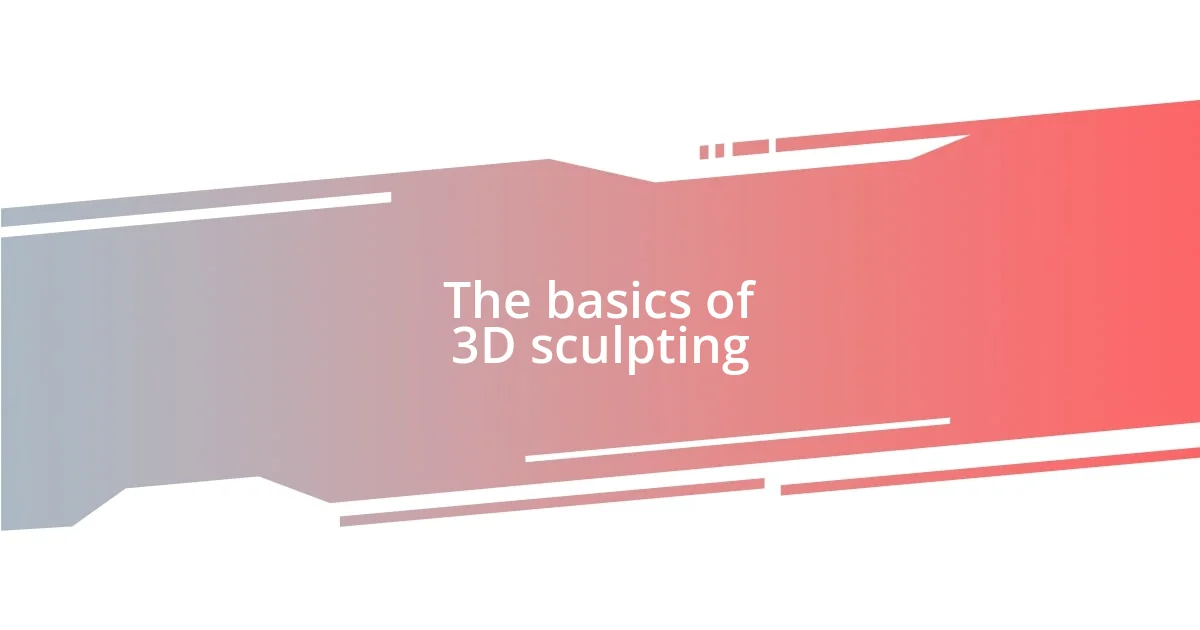
The basics of 3D sculpting
Getting into 3D sculpting can feel overwhelming at first, especially with the variety of software available today. I remember my initial struggles with the interface of programs like ZBrush—it took patience and a lot of trial and error. But each failed attempt brought about a deeper understanding of shapes and forms, which is essential in sculpting.
Fundamentally, 3D sculpting involves manipulating a digital mesh to create detailed models. It’s like working with clay, but in a virtual space where your hands can’t directly touch the material. I sometimes wondered, is this really sculpting if I’m not physically shaping something? But I soon realized that the artistic process remains the same—imagination and creativity triumph over the medium.
The tools you use are critical to your success. From brushes that add texture to the options for smoothening or detailing, each feature serves a purpose and fuels your creativity. I find myself experimenting with different brushes as if I’m trying to find the right paintbrush for a canvas. Isn’t it fascinating how the right tools can transform an idea into a tangible form, even if that form is digital?
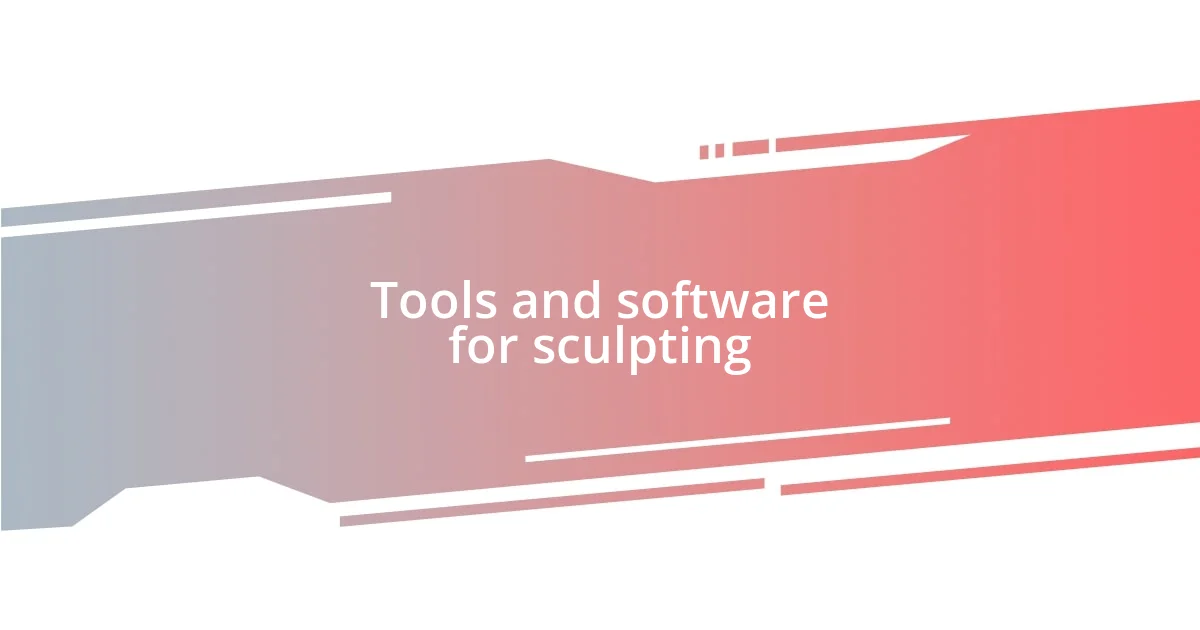
Tools and software for sculpting
When it comes to 3D sculpting, the tools and software you choose can significantly impact your creative journey. For me, finding software that suited my style was a game-changer. I started with Blender because it’s free and has an impressive toolset, but I soon transitioned to ZBrush for its advanced features. I felt like I had entered a whole new world of possibilities; the more I explored, the more I understood how each tool could help refine my vision.
During my journey, I came across a few standout tools that transformed my sculpting process. For instance, using dynamic topology in sculpting software allows for more fluid and organic forms—something I struggled with at first. I vividly remember the excitement I felt when I first sculpted a character with dynamic topology; it was like unleashing my inner artist. It’s essential to understand how different software can cater to specific needs, whether you’re focusing on gaming assets or character design.
Choosing the right software can also depend on your level of expertise. As a beginner, I found Mudbox’s intuitive interface welcoming, but more experienced artists might gravitate towards the depth of Maya or ZBrush. Each tool brings its unique finesse to the table, and I believe the best way to discover what works for you is to experiment with multiple platforms and find your niche.
| Software | Key Features |
|---|---|
| ZBrush | Advanced sculpting, dynamic brushes, and detailing tools |
| Blender | Free, powerful with large community support |
| Mudbox | User-friendly interface, excellent for beginners |
| Maya | Comprehensive modeling and animation capabilities |

Key techniques for beginners
Getting into the nuts and bolts of 3D sculpting can feel like learning an entirely new language. One technique that really worked for me as I started was focusing on blockout shapes. This method involves creating basic forms before diving into intricate details; it’s like laying the foundation of a house. I remember spending hours on just the silhouettes, learning how different volumes gave my models a sense of proportion and balance.
Here are some key techniques to adopt as a beginner:
- Blockout Shapes: Start with basic forms to establish your model’s proportions.
- Use Reference Images: They can guide your sculpting process and keep your proportions in check.
- Dynamic Topology: Experiment with this to push flexibility in your sculptures.
- Layering: Utilize different layers for adding details without affecting the base mesh.
- Practice Regularly: Just like honing any skill, consistent practice will enhance your ability.
I also found that playing with the scale of my models opened up unexpectedly creative avenues. There’s a unique thrill in exaggerating features—it feels freeing, almost like studying caricatures in drawing. This approach not only made the process enjoyable but also taught me a lot about how to convey emotion and character through exaggerated forms.
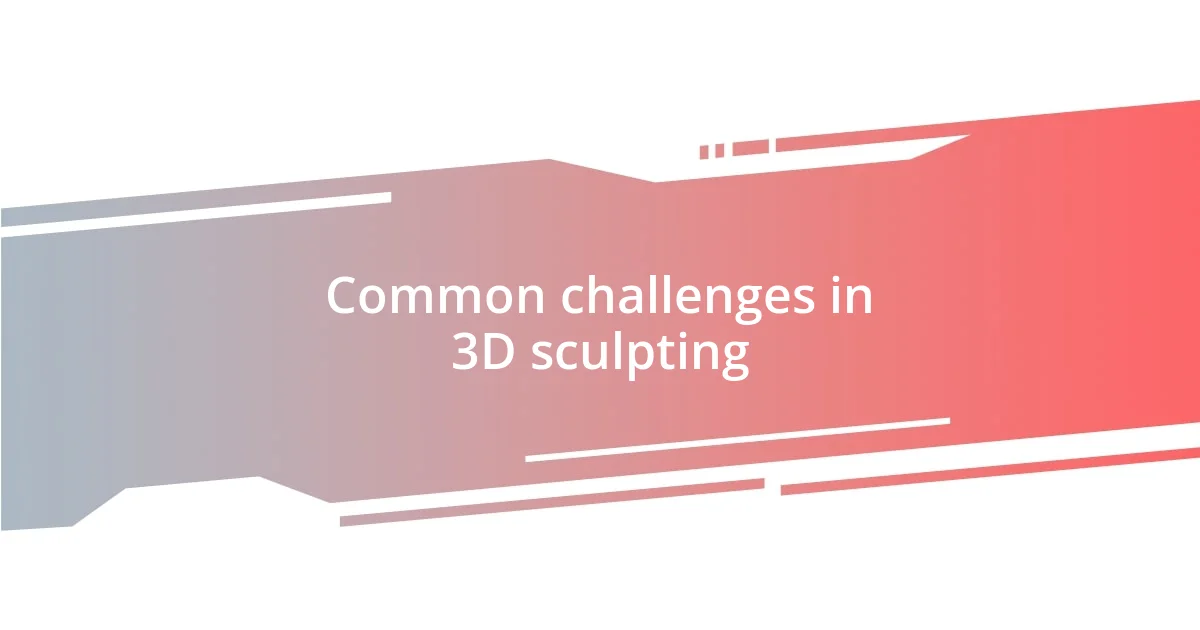
Common challenges in 3D sculpting
One of the biggest challenges I faced in 3D sculpting was mastering the intricacies of detail. It’s one thing to create a base shape, but adding fine details can be daunting. I recall a time when I was sculpting a dragon; getting the scales just right felt like an uphill battle. I often wondered—how do other artists make it look so effortless? I learned that patience and practice are key. It’s all about developing a keen eye for those subtle nuances that can elevate your work.
Another hurdle I encountered was managing my workflow efficiently. There were moments when I spent hours tweaking minute details only to step back and realize the overall form was off. This taught me to frequently revisit the larger picture. I now ask myself, “Does this fit within the character’s design?” It has helped me stay grounded in my vision and avoid getting lost in smaller aspects.
Navigating software limitations can also be tricky. I remember hitting a wall with Blender when I wanted to create dynamic clothing simulations. It was frustrating, and I had to constantly remind myself not to let these technical limitations stifle my creativity. This experience reinforced the importance of knowing the software’s strengths and weaknesses. Embracing these challenges became an essential part of my growth as a sculptor; each time I overcame one, I felt a rush of accomplishment.

Tips for improving your skills
One of my favorite tips for improving skills in 3D sculpting is to seek out constructive feedback. Early on, I was hesitant to share my work, fearing criticism. However, once I started sharing with a community of fellow artists, I realized how invaluable their insights were. Their fresh perspectives helped me see my work in a new light, and I learned to embrace feedback as a tool for growth rather than a setback.
Another strategy that greatly enhanced my abilities was to set specific goals for each session. I remember a time when I decided to focus solely on mastering hands. Instead of jumping around from one feature to another, I dedicated my time to understanding the anatomy and gestures of hands. This kind of focused practice not only boosted my overall proficiency but also kept me engaged and motivated. Are you willing to dedicate time to mastering one feature at a time?
Lastly, I highly recommend experimenting with different software and tools. At first, I stuck to the same platform, feeling comfortable within its walls. But when I tried out ZBrush for the first time, I was amazed at how its features unlocked new creative possibilities. This experience taught me that stepping outside my comfort zone can lead to surprising breakthroughs in artistic expression. Have you considered exploring other platforms or techniques to expand your skill set?
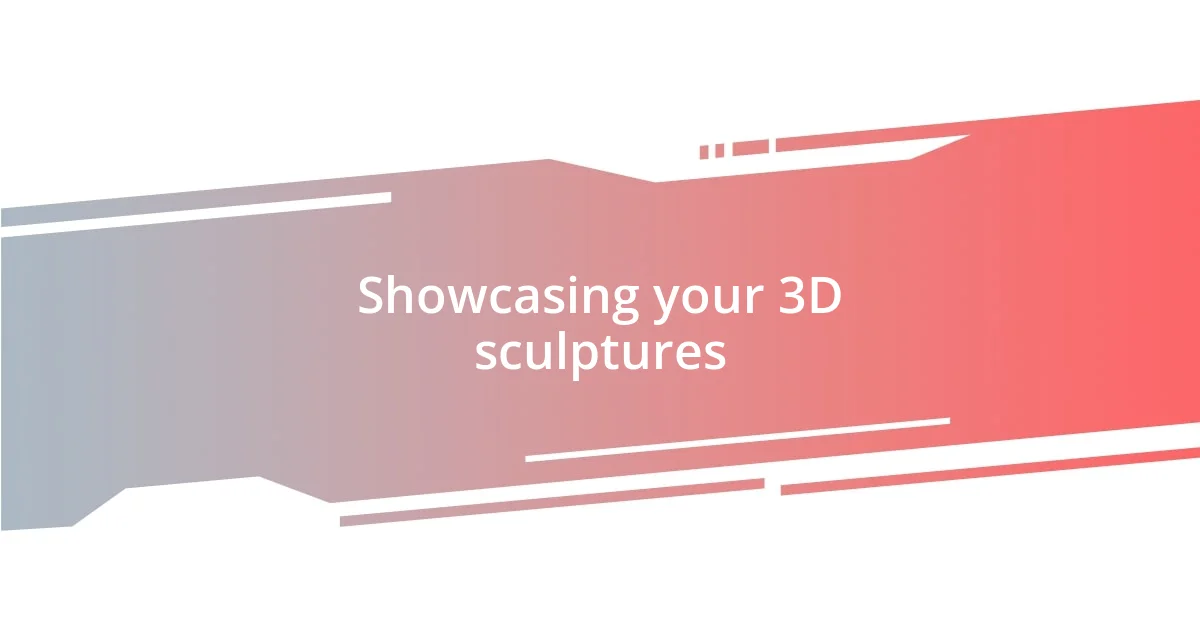
Showcasing your 3D sculptures
When it comes to showcasing my 3D sculptures, I’ve learned that presentation is just as crucial as the creation itself. I vividly remember the first time I displayed my work at a local art show. It felt exhilarating! Curating the layout, lighting, and even the backdrop made such a difference in how my sculptures were perceived. Have you ever considered how the environment in which your art is shown can impact an audience’s experience?
I also found that using social media effectively can extend the reach of my sculptures far beyond my local community. Platforms like Instagram became my virtual gallery where I could share not only finished pieces but also behind-the-scenes glimpses of my process. Engaging with followers through stories and posts made me feel connected to a supportive network that appreciates the journey of creation. Isn’t it incredible how technology allows us to build a community around our art?
Experimenting with different presentation styles has been a game-changer for me. I once decided to create a 3D-printed version of my sculpture and mixed it with traditional materials for a mixed-media piece. The response was overwhelmingly positive, and it opened my eyes to new possibilities in presenting my work. It taught me that showcasing art isn’t just about the piece itself, but how innovative we can be in presenting it. What unique ways have you thought about displaying your own creations?
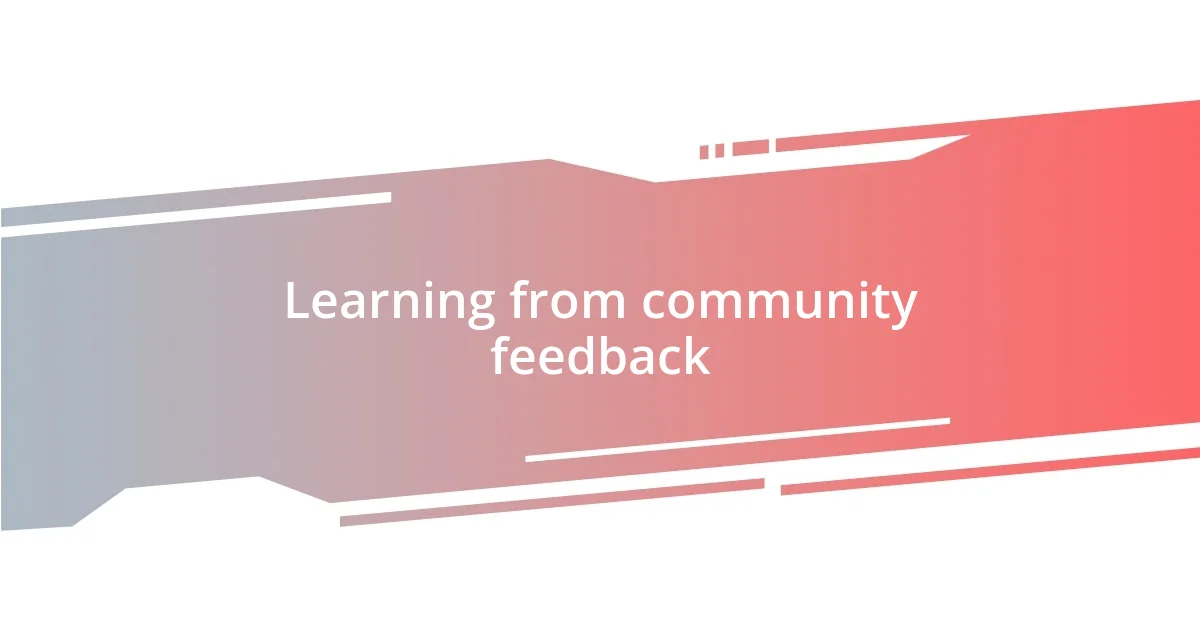
Learning from community feedback
Learning from community feedback has been transformative for my 3D sculpting journey. I remember nervously posting my early work on forums, unsure of how others would react. To my surprise, not only did I receive constructive critiques, but the encouragement from fellow artists motivated me to push my boundaries further. Isn’t it amazing how a supportive community can boost your confidence?
I vividly recall a moment when community feedback led to a significant breakthrough in my sculpting technique. I had created a character that I believed was visually striking. However, a couple of artists pointed out inconsistencies in its proportions. Initially, I felt a pang of disappointment, but after revisiting those critiques, I realized they were spot-on. Adjusting my design not only improved realism but also sparked creative ideas for future projects. Have you ever experienced a shift in your work after receiving input from others?
Engaging with my art community has not only accelerated my skill development but also fostered meaningful connections. I frequently participate in online challenges where we critique each other’s pieces. One time, I was blown away by the thoughtful suggestions I received on my sculpt from a new friend I met through this platform. Their perspective opened my eyes to techniques I hadn’t even considered before. How often do you take the time to reflect on the power of community in your creative process?












